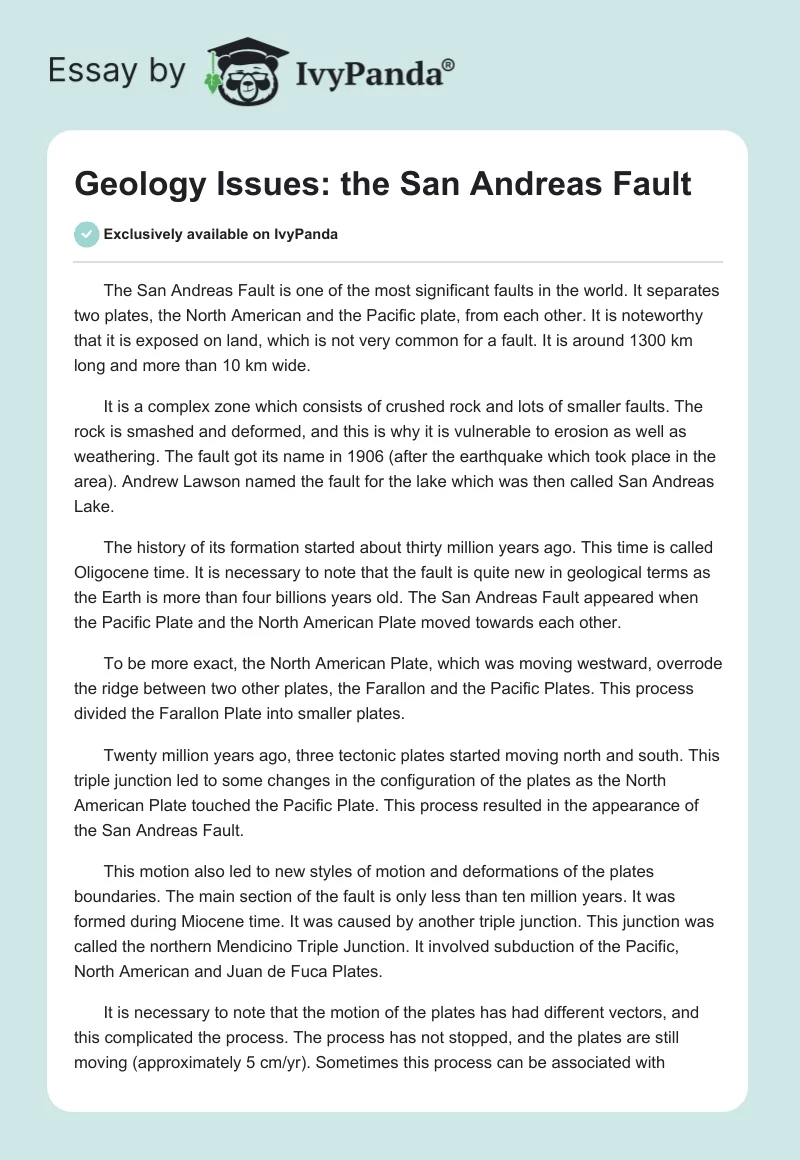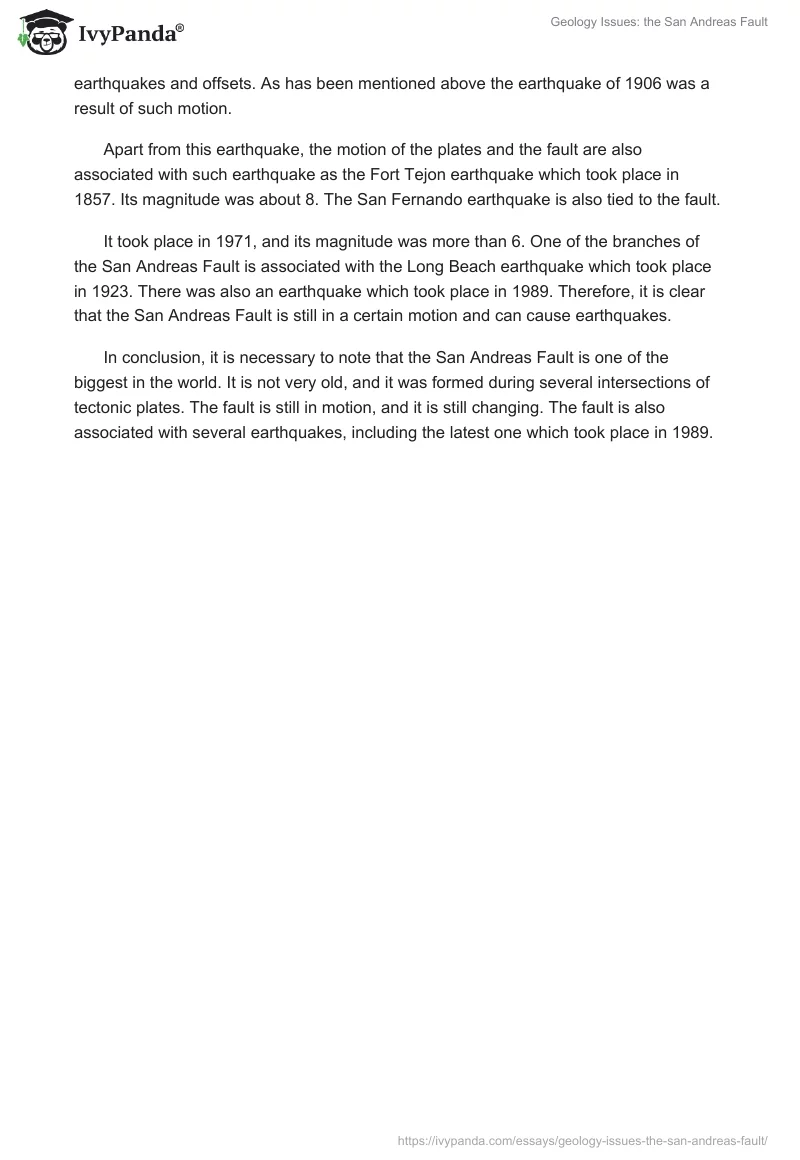The San Andreas Fault is one of the most significant faults in the world. It separates two plates, the North American and the Pacific plate, from each other. It is noteworthy that it is exposed on land, which is not very common for a fault. It is around 1300 km long and more than 10 km wide.
It is a complex zone which consists of crushed rock and lots of smaller faults. The rock is smashed and deformed, and this is why it is vulnerable to erosion as well as weathering. The fault got its name in 1906 (after the earthquake which took place in the area). Andrew Lawson named the fault for the lake which was then called San Andreas Lake.
The history of its formation started about thirty million years ago. This time is called Oligocene time. It is necessary to note that the fault is quite new in geological terms as the Earth is more than four billions years old. The San Andreas Fault appeared when the Pacific Plate and the North American Plate moved towards each other.
To be more exact, the North American Plate, which was moving westward, overrode the ridge between two other plates, the Farallon and the Pacific Plates. This process divided the Farallon Plate into smaller plates.
Twenty million years ago, three tectonic plates started moving north and south. This triple junction led to some changes in the configuration of the plates as the North American Plate touched the Pacific Plate. This process resulted in the appearance of the San Andreas Fault.
This motion also led to new styles of motion and deformations of the plates boundaries. The main section of the fault is only less than ten million years. It was formed during Miocene time. It was caused by another triple junction. This junction was called the northern Mendicino Triple Junction. It involved subduction of the Pacific, North American and Juan de Fuca Plates.
It is necessary to note that the motion of the plates has had different vectors, and this complicated the process. The process has not stopped, and the plates are still moving (approximately 5 cm/yr). Sometimes this process can be associated with earthquakes and offsets. As has been mentioned above the earthquake of 1906 was a result of such motion.
Apart from this earthquake, the motion of the plates and the fault are also associated with such earthquake as the Fort Tejon earthquake which took place in 1857. Its magnitude was about 8. The San Fernando earthquake is also tied to the fault.
It took place in 1971, and its magnitude was more than 6. One of the branches of the San Andreas Fault is associated with the Long Beach earthquake which took place in 1923. There was also an earthquake which took place in 1989. Therefore, it is clear that the San Andreas Fault is still in a certain motion and can cause earthquakes.
In conclusion, it is necessary to note that the San Andreas Fault is one of the biggest in the world. It is not very old, and it was formed during several intersections of tectonic plates. The fault is still in motion, and it is still changing. The fault is also associated with several earthquakes, including the latest one which took place in 1989.


